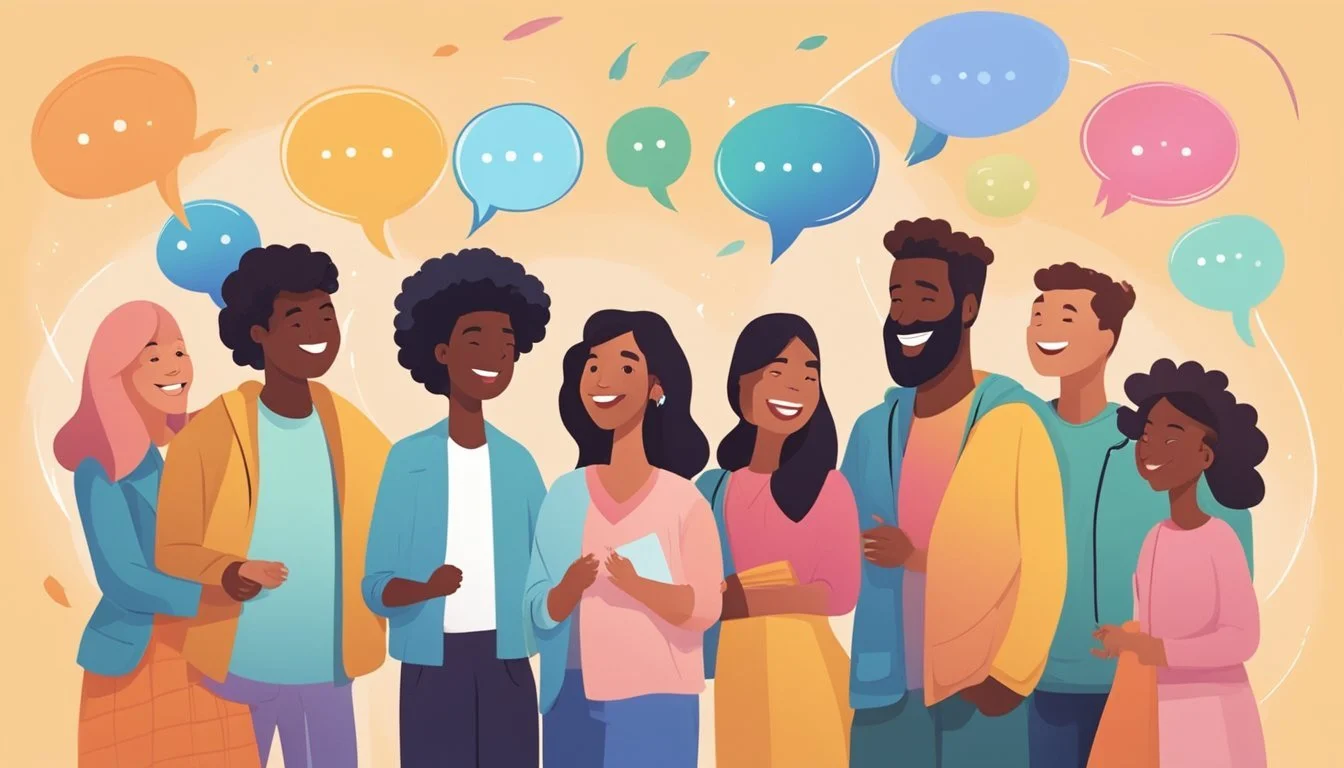7 Techniques to Improve Your Body Image
Expert-Backed Strategies for Self-Acceptance
Body image significantly impacts mental and physical well-being. Many adults struggle with negative perceptions of their bodies, influenced by societal standards and media portrayals of idealized physiques. These issues can affect self-esteem, relationships, and overall quality of life.
Improving body image is a journey that requires effort and practice. By implementing specific techniques, individuals can cultivate a healthier relationship with their bodies and develop a more positive self-image. This article explores seven effective strategies to enhance body image, offering practical tips for readers to incorporate into their daily lives.
1) Practice Positive Affirmations
Positive affirmations are powerful tools for improving body image. These short, encouraging statements can help reshape negative thought patterns about one's appearance.
Individuals can start by choosing affirmations that resonate with them personally. Examples include "I love and accept my body" or "My body is strong and capable."
Consistency is key when using affirmations. Repeating them daily, preferably in front of a mirror, can reinforce positive self-perception over time.
It's important to focus on affirmations that celebrate the body's functions and abilities, not just its appearance. Statements like "My body allows me to experience the world" can foster a deeper appreciation.
Pairing affirmations with specific actions or moments throughout the day can enhance their effectiveness. For instance, saying an affirmation before meals or during exercise.
While it may feel uncomfortable at first, perseverance is crucial. With regular practice, these positive statements can begin to replace self-critical thoughts.
2) Surround Yourself with Supportive People
The people we spend time with can significantly impact our body image. Surrounding oneself with supportive individuals who promote positive self-perception is crucial for improving body image.
Seek out friends and family members who uplift and encourage. These individuals should focus on personal qualities rather than physical appearance. They should celebrate diversity in body types and avoid making negative comments about their own or others' bodies.
Consider joining support groups or online communities dedicated to body positivity. These spaces often provide a nurturing environment where individuals can share experiences and offer encouragement.
It's important to limit exposure to people who consistently make critical comments about appearance or promote unrealistic beauty standards. This may involve setting boundaries with certain individuals or reducing time spent on social media platforms that foster negative body comparisons.
Engaging in activities with body-positive groups can also be beneficial. Participating in events or workshops that promote self-acceptance and celebrate diverse body types can reinforce a healthier body image.
Remember that supportive relationships are reciprocal. By offering encouragement to others and promoting body positivity, individuals can create a more supportive environment for themselves and those around them.
3) Engage in Regular Physical Activity
Regular exercise offers numerous benefits for improving body image. Physical activity helps strengthen muscles and boost endurance, leading to increased confidence in one's physical capabilities.
Exercise promotes the release of endorphins, which can enhance mood and reduce feelings of stress or anxiety. This positive mental state often translates to a more favorable perception of one's body.
Engaging in physical activity shifts focus from appearance to functionality. It encourages appreciation for what the body can do rather than how it looks.
Consistent exercise can lead to improved posture, increased energy levels, and better sleep quality. These positive changes often contribute to a more positive body image.
Even short bouts of exercise, such as 10-30 minutes, can yield benefits. The key is to find enjoyable activities that can be sustained over time.
Regular physical activity doesn't necessarily mean intense workouts. Any form of movement, from walking to dancing, can contribute to improved body image and overall well-being.
4) Focus on Nutrition for Well-being
Shifting attention to nutrition for overall well-being can positively impact body image. Rather than fixating on restrictive diets or calorie counting, emphasizing nourishing foods promotes a healthier relationship with eating.
Incorporating a variety of fruits, vegetables, whole grains, and lean proteins supports physical and mental health. These nutrient-dense choices provide energy, improve mood, and enhance cognitive function.
Staying hydrated by drinking adequate water throughout the day is equally important. Proper hydration aids digestion, skin health, and overall bodily functions.
Mindful eating practices encourage paying attention to hunger and fullness cues. This approach fosters a more intuitive connection with food and helps prevent overeating or restrictive behaviors.
Allowing occasional treats without guilt is part of a balanced nutrition plan. Enjoying favorite foods in moderation contributes to a positive mindset around eating.
Consulting a registered dietitian can provide personalized guidance for developing sustainable eating habits. Professional advice ensures nutritional needs are met while supporting a positive body image.
5) Limit Social Media Exposure
Reducing social media use can significantly improve body image for teens and young adults. Studies show that cutting back on social media exposure by 50% for just a few weeks leads to notable improvements in how individuals perceive their weight and overall appearance.
Social media platforms often present idealized and unrealistic body standards. Constant exposure to these images can negatively impact self-esteem and body satisfaction. By limiting time spent on these platforms, individuals can reduce their exposure to potentially harmful content.
Setting boundaries around social media use is crucial. This can include designating specific times for checking social media, removing apps from mobile devices, or using screen time tracking tools to monitor usage.
Replacing social media time with enjoyable activities can have additional benefits. Engaging in hobbies, exercise, or face-to-face interactions can improve mental health and body image.
When using social media, it's important to curate a positive feed. Following accounts that promote body positivity, diversity, and self-acceptance can help create a more supportive online environment.
6) Seek Professional Counseling
Professional counseling can be an effective way to address persistent body image issues. A qualified therapist can help individuals identify and challenge negative thought patterns related to their appearance.
Counselors use various techniques to improve body image, such as cognitive-behavioral therapy and mindfulness practices. These approaches can help people develop a more balanced and realistic view of their bodies.
In therapy sessions, individuals may explore the root causes of their body image concerns. This can include past experiences, societal pressures, or underlying mental health conditions.
Counseling provides a safe space to express feelings and fears about one's body. Therapists can offer strategies to cope with negative self-talk and build self-esteem.
For those struggling with eating disorders or severe body dysmorphia, professional help is crucial. Therapists can provide specialized treatment and support for these complex issues.
Group therapy sessions focused on body image can also be beneficial. Sharing experiences with others facing similar challenges can foster a sense of community and support.
7) Wear Clothes that Make You Feel Good
Choosing clothing that enhances confidence and comfort can significantly boost body image. Dopamine dressing, the practice of wearing clothes that spark joy, has gained popularity for its mood-elevating effects.
Selecting garments that fit well and flatter one's body shape is crucial. Ill-fitting clothes can negatively impact self-perception, while properly tailored items can accentuate positive features.
Color choice plays a role in mood and self-image. Individuals may find certain hues more uplifting or empowering, and incorporating these into their wardrobe can positively influence their outlook.
Personal style expression through clothing allows for creativity and self-affirmation. Wearing outfits that align with one's personality and preferences can foster a sense of authenticity and self-acceptance.
Comfort should not be overlooked when dressing for improved body image. Soft fabrics and relaxed fits can promote physical ease, which often translates to mental comfort and increased body satisfaction.
Accessorizing thoughtfully can complement an outfit and boost confidence. Choosing jewelry, scarves, or other accessories that hold personal meaning or simply bring joy can enhance overall self-image.
Understanding Body Image
Body image encompasses our mental perception of our physical appearance and how we relate to our bodies. It plays a crucial role in self-esteem, mental health, and overall well-being.
Defining Body Image
Body image refers to the thoughts, feelings, and behaviors a person has about their physical appearance. It includes how accurately one perceives their body shape and size, as well as their emotional responses to these perceptions.
A positive body image involves accepting and appreciating one's body, while a negative body image can lead to dissatisfaction and distress. Body image is not static - it can change over time and is influenced by various factors.
Many people struggle with body image issues at some point in their lives. These concerns can range from mild dissatisfaction to severe distress that impacts daily functioning.
Factors Influencing Body Image
Multiple factors shape how individuals view their bodies. Media and societal standards often promote unrealistic ideals of beauty and body types, which can negatively impact self-perception.
Family attitudes and comments about appearance can significantly influence body image from a young age. Peer pressure and social comparisons also play a role, especially during adolescence and young adulthood.
Personal experiences, such as bullying or trauma, can affect body image. Physical changes due to aging, pregnancy, or health conditions may alter how people perceive themselves.
Cultural norms and expectations around body size and shape vary widely and impact individual perceptions. Mental health conditions like depression or anxiety can also contribute to negative body image.
The Psychology Behind Body Image
Body image is a complex psychological construct influenced by various factors. It encompasses our perceptions, thoughts, and feelings about our physical appearance.
Body Image and Self-Esteem
Body image plays a crucial role in shaping self-esteem. A positive body image fosters confidence and self-acceptance, enabling individuals to engage more comfortably in daily activities.
Conversely, negative body perceptions can lead to low self-esteem and decreased confidence. This can impact various aspects of life, from personal relationships to professional opportunities.
Research shows that improving body image can significantly boost overall self-esteem. Cognitive behavioral techniques and self-compassion practices have proven effective in cultivating a more positive body image.
The Impact of Media on Body Image
Media representations of idealized bodies significantly influence body image perceptions. Exposure to unrealistic beauty standards in advertisements, social media, and entertainment can lead to body dissatisfaction.
Studies indicate that reducing exposure to these images can improve body image. Critical media literacy skills help individuals recognize and challenge unrealistic portrayals.
The rise of body-positive movements in media has begun to counteract some negative impacts. Diverse body representations promote more inclusive beauty standards and can positively affect viewers' self-perceptions.
Media literacy programs in schools and communities aim to equip individuals with tools to navigate media influences on body image more effectively.




